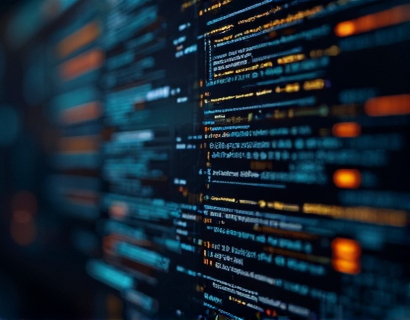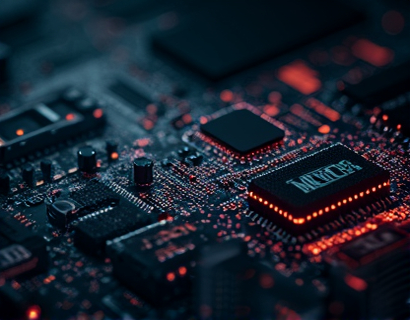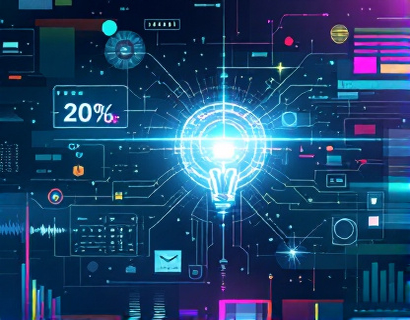Advanced Layer 2 Solutions: Transforming EVM-Enabled Blockchain Development for Enhanced Scalability and Security
In the rapidly evolving landscape of blockchain technology, Layer 2 solutions have emerged as a pivotal advancement, particularly for EVM-enabled blockchains like Ethereum. These solutions are designed to address the inherent limitations of Layer 1 blockchains, such as scalability and security, while maintaining the integrity and decentralization that blockchain offers. For developers, the integration of advanced Layer 2 solutions represents a transformative shift, enabling the creation of faster, more secure, and cost-effective decentralized applications (dApps). This article delves into the intricacies of these solutions, exploring how they are reshaping the future of blockchain innovation.
Understanding Layer 2 Solutions
Layer 2 solutions refer to technologies built on top of a blockchain's native Layer 1 protocol to enhance performance and reduce costs. Unlike Layer 1, which processes transactions directly on the blockchain, Layer 2 solutions offload some of the transaction processing to a secondary layer. This approach significantly reduces the load on the primary blockchain, leading to faster transaction times and lower fees. For EVM-enabled blockchains, Layer 2 solutions are particularly crucial as they help maintain the platform's scalability without compromising on security or decentralization.
Key Benefits of Advanced Layer 2 Solutions
The adoption of advanced Layer 2 solutions brings numerous benefits to blockchain developers and users alike. Firstly, scalability is greatly improved. By processing transactions off the main blockchain, these solutions can handle a much higher volume of transactions per second (TPS). This is essential for dApps that require high throughput, such as gaming platforms, social networks, and financial services. Secondly, security is enhanced. Layer 2 solutions often employ sophisticated cryptographic techniques and consensus mechanisms that are designed to be as secure as the underlying Layer 1 blockchain. This ensures that the benefits of scalability do not come at the cost of security. Lastly, cost efficiency is a significant advantage. Transaction fees on Layer 2 networks are typically much lower than on Layer 1, making blockchain technology more accessible to a broader audience.
Types of Layer 2 Solutions for EVM-Compatible Blockchains
Several types of Layer 2 solutions are particularly well-suited for EVM-enabled blockchains. These include state channels, sidechains, and rollups. Each type offers unique advantages and is suited to different use cases.
State Channels
State channels allow for a series of transactions to be executed off-chain, with only the final state being recorded on the blockchain. This method is highly efficient for applications that involve frequent, small transactions, such as micropayments or in-game transactions. The key benefit of state channels is their low latency and minimal transaction costs, making them ideal for real-time applications.
Sidechains
Sidechains are separate blockchains that are linked to the main EVM blockchain. They operate independently but can transfer assets and data back and forth with the main chain. Sidechains can implement their own consensus mechanisms and features, providing greater flexibility. This makes them suitable for applications that require specific functionalities not available on the main chain, such as privacy features or different smart contract languages.
Rollups
Rollups are one of the most promising Layer 2 solutions for EVM-enabled blockchains. They come in two main varieties: Optimistic Rollups and ZK Rollups. Optimistic Rollups bundle multiple transactions into a single transaction on the main chain, with a challenge period to verify the validity of the off-chain transactions. ZK Rollups, on the other hand, use zero-knowledge proofs to bundle and verify transactions, providing faster finality and higher throughput. Both types of rollups significantly reduce transaction costs and increase TPS, making them ideal for large-scale dApps.
Enhancing Developer Experience
The integration of advanced Layer 2 solutions not only improves the technical capabilities of EVM-enabled blockchains but also enhances the developer experience. Developers can leverage these solutions to build more complex and feature-rich dApps without the overhead of high transaction fees and slow processing times. Here are some ways Layer 2 solutions empower developers:
Firstly, the reduced transaction costs enable more frequent and smaller transactions, which is crucial for applications that require real-time interactions. This can lead to more engaging and responsive user experiences. Secondly, the increased scalability allows developers to handle a larger user base and more complex computations without worrying about network congestion. This is particularly important for decentralized finance (DeFi) applications, where high transaction volumes are common. Lastly, the improved security of Layer 2 solutions provides developers with greater confidence in deploying sensitive applications, knowing that their users' assets and data are well-protected.
Case Studies and Real-World Applications
To illustrate the impact of advanced Layer 2 solutions, consider a few real-world applications. One notable example is the use of Optimistic Rollups on Ethereum, which has enabled the deployment of high-performance DeFi protocols. These protocols can process a large number of transactions with low fees, making them accessible to a wider range of users. Another example is the implementation of state channels in gaming platforms, where the low latency and cost efficiency allow for seamless in-game transactions and interactions. These applications demonstrate the practical benefits of Layer 2 solutions in enhancing both user experience and developer capabilities.
Challenges and Future Directions
Despite the numerous advantages, the adoption of advanced Layer 2 solutions is not without challenges. One of the primary challenges is the complexity of integrating these solutions into existing blockchain ecosystems. Developers need to have a deep understanding of both the main chain and the Layer 2 technology to ensure seamless integration. Additionally, the interoperability between different Layer 2 solutions and main chains remains an area that requires further development. Standardization and community collaboration are essential to address these challenges.
Looking ahead, the future of Layer 2 solutions is promising. Research and development are ongoing to create more efficient and user-friendly Layer 2 technologies. The evolution of cross-chain interoperability will enable developers to build dApps that can seamlessly interact with multiple blockchain ecosystems. Furthermore, the integration of Layer 2 solutions with emerging technologies like Web3 and the Metaverse will open new possibilities for decentralized applications, driving the next wave of blockchain innovation.
In conclusion, advanced Layer 2 solutions are revolutionizing EVM-enabled blockchain development by enhancing scalability, security, and cost efficiency. These solutions empower developers to create more sophisticated and user-friendly dApps, paving the way for a more decentralized and accessible future. As the technology continues to evolve, the potential for blockchain to transform various industries becomes increasingly tangible.










































